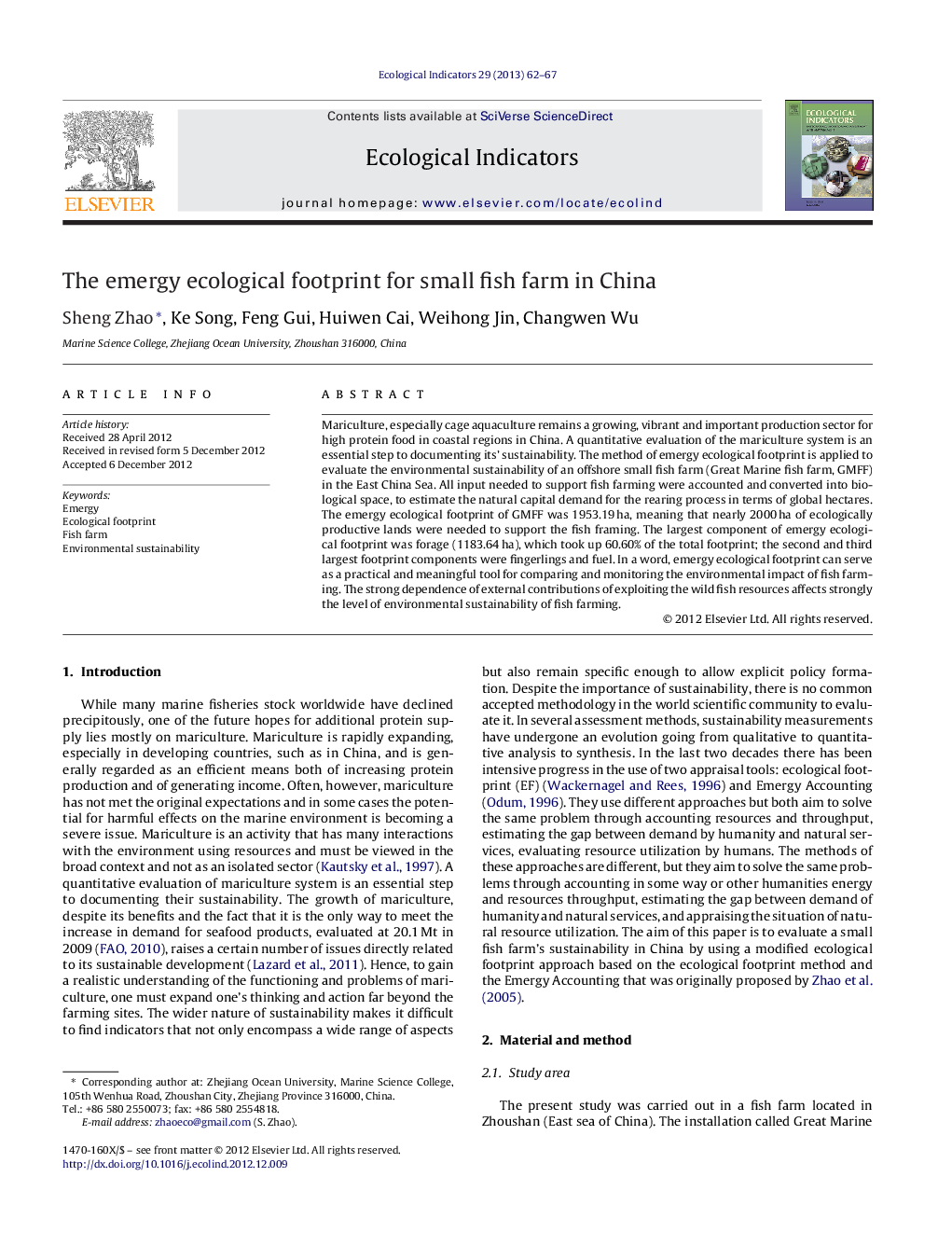| کد مقاله | کد نشریه | سال انتشار | مقاله انگلیسی | نسخه تمام متن |
|---|---|---|---|---|
| 4373464 | 1617171 | 2013 | 6 صفحه PDF | دانلود رایگان |

Mariculture, especially cage aquaculture remains a growing, vibrant and important production sector for high protein food in coastal regions in China. A quantitative evaluation of the mariculture system is an essential step to documenting its’ sustainability. The method of emergy ecological footprint is applied to evaluate the environmental sustainability of an offshore small fish farm (Great Marine fish farm, GMFF) in the East China Sea. All input needed to support fish farming were accounted and converted into biological space, to estimate the natural capital demand for the rearing process in terms of global hectares. The emergy ecological footprint of GMFF was 1953.19 ha, meaning that nearly 2000 ha of ecologically productive lands were needed to support the fish framing. The largest component of emergy ecological footprint was forage (1183.64 ha), which took up 60.60% of the total footprint; the second and third largest footprint components were fingerlings and fuel. In a word, emergy ecological footprint can serve as a practical and meaningful tool for comparing and monitoring the environmental impact of fish farming. The strong dependence of external contributions of exploiting the wild fish resources affects strongly the level of environmental sustainability of fish farming.
► The method of emergy ecological footprint (EEF) was used to calculate the ecological footprint and the carrying capacity of a fish farm on the east coast of China.
► The EEF of the fish farm was 1953.19 ha, meaning that nearly 2000 ha of ecologically productive lands were needed to support the fish framing.
► The results showed that an EEF area about 14 times greater than emergy carrying capacity and about 293 times greater than actual physical area.
► The EEF of forage is the largest proportion of the total emergy footprint and thus improving forage efficiency in fish farm system is already a priority.
Journal: Ecological Indicators - Volume 29, June 2013, Pages 62–67